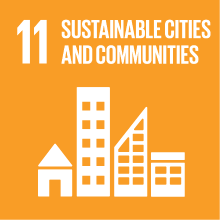CHEMISTRY AND TECHNOLOGY OF ADDITIVES FOR CONSTRUCTION
- Academic year
- 2024/2025 Syllabus of previous years
- Official course title
- CHIMICA E TECNOLOGIA DEGLI ADDITIVI PER L'EDILIZIA
- Course code
- CT0400 (AF:374103 AR:207032)
- Teaching language
- Italian
- Modality
- On campus classes
- ECTS credits
- 6
- Degree level
- Bachelor's Degree Programme
- Academic Discipline
- CHIM/04
- Period
- 2nd Semester
- Course year
- 3
- Moodle
- Go to Moodle page
Contribution of the course to the overall degree programme goals
This requires a multidisciplinary knowledge ranging from chemistry, physics, to the science of materials, in order to fully understand the most important aspects of the use of chemicals to formulate the commercial products.
Expected learning outcomes
Knowledge of the main production of building binders. Knowledge of problems related to the degradation of cements and concretes and understanding of the properties of the main additives used in commercial formulations. Understanding of the environmental impact and critical points of the products taken into consideration.
2. Ability to apply knowledge and understanding
Knowing how to solve practical problems regarding the choice of the most useful cement formulation. Knowing how to create and organize a collection of experimental data related to the rheological properties of cement pastes containing additives. Choose the most suitable products both for new constructions and for restoration.
3. Ability to judge
Know how to evaluate and recognize the cement formulation used in the realization of a specific product. Knowing how to recognize errors through a critical analysis of the "mix designer" activity in a construction site.
4. Communication skills
Knowing how to communicate the knowledge learned and the result of their application using appropriate terminology, both oral and written. Knowing how to interact with the teacher and with the classmates, also with a view to joining a team.
.
5. Learning skills
Knowing how to take notes, selecting and collecting information according to their importance and priority. Being able to be sufficiently autonomous in the application and in the critical evaluation of the themes proposed in the theoretical part.
Pre-requirements
Contents
Science of materials applied to building.
Air and hydraulic binders.
Definitions of grip and hardening.
Gypsum production.
Lime production.
Aerial lime and hydraulic lime.
Cements.
Portland cement production plant.
The formulations.
Concrete and reinforced concrete.
Concrete degradation.
Additives for concrete.
Recalls of polymer science.
Introduction to rheology.
Non-Newtonian fluids.
Fluidifying and superfluidifying additives.
Aerating additives.
Accelerating and retarding additives.
High performance cements.
Fiber-reinforced cements.
Self-leveling cement.
Lightened and heat-insulated cements.
Geopolymers.
Glues and consolidating products.
Products for architectural restoration.
Safety elements on construction sites.
Referral texts
Assessment methods
Through a series of questions that simulate real problems, the student will have to demonstrate both the learning of the topics taught in class and the ability to expose them in a formal way.
The oral exam lasts about 30 minutes and must be sustained on the dates of appeal agreed with the teacher during the exam session.
To achieve a passing grade (18/30), the candidate must have acquired basic educational knowledge relating to industrial production and the use of additives for construction.
In particular, the student must demonstrate:
- to know and apply the chemical aspects involved in the use of aerial and hydraulic binders;
- to know the main types of additives studied during the course;
- to know the sustainability and safety aspects in such a field.
- to know the logistic and economic aspects, and environmental impact linked to the production of building products.
The mark can be increased up to the maximum (30/30) if this knowledge is correctly applied to the building materials analyzed during the course.
In particular, two further questions will be asked which will allow the vote to be increased by a maximum of 6/30 for each answer.
The questions will be related to the evaluation of the study of the following topics:
1 Production and characterization of aerial binders;
Production and characterization of hydraulic binders,
Chemical and chemical-physical description of the setting and hardening phases;
Degradation phenomena on cementitious materials;
Characteristics of concrete and reinforced concrete,
. Composite materials.
Mechanical properties and various tests.
2 Definition and various types of additives.
Formulations and mix-design;
Industrial production of additives;
Recovery and recycling of inorganic additives from other production cycles
Rheological properties,
Production of polymers and their possible fluidizing effect
Application examples of formulations and the role of each additive.
Honors will be awarded if the candidate highlights their competence and ability to propose the most appropriate solutions to real problems linked to the processes studied during the interview.
Type of exam
Teaching methods
In the "moodle" platform of the University there is teaching material (material projected in the classroom).
Further information
Accommodation and support services for students with disabilities and students with specific learning impairments:
Ca’ Foscari abides by Italian Law (Law 17/1999; Law 170/2010) regarding support
services and accommodation available to students with disabilities. This includes students with mobility, visual, hearing and other disabilities (Law 17/1999), and specific learning impairments (Law 170/2010). In the case of disability or impairment that requires accommodations (i.e., alternate testing, readers, note takers or interpreters) please contact the Disability and Accessibility Offices in Student Services: disabilita@unive.it.
STRUCTURE AND CONTENT OF THE COURSE COULD CHANGE AS A RESULT OF THE COVID-19 EPIDEMIC.
2030 Agenda for Sustainable Development Goals
This subject deals with topics related to the macro-area "Cities, infrastructure and social capital" and contributes to the achievement of one or more goals of U. N. Agenda for Sustainable Development


